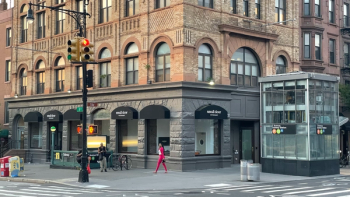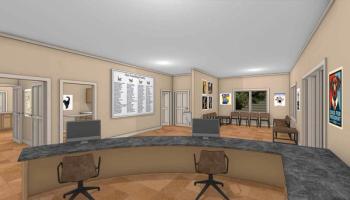
Use 4 factors to set veterinary practice owners' pay
How to crunch the numbers for a fair salary for private practice owners.
For practice owners, the beginning of the year is a good time to review your compensation to make sure you're being paid fairly. It's an unfortunate reality that many practice owners are actually paid less than their associate veterinarians, notwithstanding the fact that they usually work longer hours and have invested not only capital, but they have shed “blood, sweat and tears” to develop a practice.
Many practice owners believe they're well-paid, but when I've calculated what they should be making, it turns out they're not hitting the mark. Sadly, most practice owners seem to randomly determine their compensation and take what's left at the end of the year. This is no way for an owner to be paid.
Every practice owner should be paid a salary that is commensurate with four items: production, return on investment, management duties and, hopefully, net profit. Let's explore these to arrive at a formula you can compare to your financial reports:
1. Production
Similar to associates on production-based pay, these are the fees generated and collected for services the practice owner is directly involved in rendering. The practice owner must be involved in the delivery of a service to receive production credit.
Even in a single-doctor practice, the practice owner should have at least two provider accounts set up in the computer: one for the doctor and the other for “hospital.” You post over-the-counter items that clients buy-pet food or flea control-under the “hospital” account. When the doctor is directly involved in the delivery of service, that income should be posted to the doctor's provider account.
Owners are typically paid the same percentage of production as associate veterinarians within a practice-that is, 18 to 25 percent of production, with the average closer to 21 or 22 percent.
2. Return on investment
Practice owners are entitled to a return on their “blood, sweat and tears.” This may take time to build up in a practice, but it has nothing to do with real estate value. Return on investment is usually calculated by taking a percentage of the stock value of your practice. To obtain this number, you need to have your practice valuated or have some alternate method to determine practice value.
Most veterinarians feel that a return on investment of “prime plus one” is fair. You can find this by looking up prime interest rate on the Internet and adding one point. Let's say the prime interest rate is 3.5 percent, so prime plus one is 4.5 percent. You would figure 4.5 percent of the value of your practice's stock, say, $1 million. So, 4.5 percent of $1 million would be $45,000-that's the practice owner's return on investment. Most practice owners determine this at the beginning of the year and then divide that number by 12, so they pay themselves one-twelfth of the return on investment monthly throughout the year.
3. Management
The money available in a veterinary practice to pay owners and others for management duties is typically 3 to 4 percent of the practice's gross income. So, if the gross income of your practice last year was $1.5 million, you can budget $45,000 to $60,000 for management.
Remember, this is all the money you have available for management. It means if you have a practice manager and pay him or her $60,000, you don't have money left over to pay the practice owner for management duties. However, if you paid a manager $50,000, you might have $10,000 available to pay the owner for time and effort spent managing the practice.
If the practice owner doesn't spend any time personally managing the practice, he or she is not entitled to this compensation.
4. Net profit
Net profit is normally defined as the money left over in your practice's business account after all bills (including practice owner compensation) are paid. You may also choose to fund any retirement plans, put money aside in an equipment account or set aside money for future projects before determining net profit.
Let's put it all together
Now let's put this four-tier formula to work. Here's a scenario:
1. Production
> Practice owner produced annual income of $550,000
> Practice pays 22 percent of production
$550,000 x 22% = $121,000
2. Return on investment
> Prime plus one is 4.5 percent
> Practice is valued at $1.5 million
$1.5 million x 4.5% = $67,500
3. Management
> Practice owner handles 25 percent of management duties, so he or she will receive 1 percent of the total 4 percent allocated
> Practice's gross income for the year was $1.2 million (including income from associates and other practice activities)
$1.2 million x 1% = $12,000
4. Net profit
> Net profit for the year is $12,000
At the end of the year, total practice owner compensation would be:
$121,000 + $67,500 + $12,000 + $12,000 = $212,500
When you can't make ends meet
What if your practice can't afford to pay the practice owner all this money? Then what? The answer is the practice should be able to pay. If it can't, here are some problem areas that might be eating into the practice owner's just rewards:
> Are your expenses out of line? Most often, the culprit is overly high support staff and inventory costs.
> Are you generating enough revenue? You may be working hard but not appropriately charging for your services.
> Are you losing money to mistakes or theft? Your financial, inventory and staffing internal controls might need some fine-tuning.
Unfortunately, many practice owners are what I call “bottom feeders.” They just take what's left over at the end of the year as their compensation. Well, maybe that's not enough. Maybe your practice owner is entitled to more pay. If your practice can't support fair owner compensation, maybe the practice isn't as financially healthy as you think. The best way to find out is to do the math and find out what the owners really deserve.
Mark Opperman, CVPM, is a certified veterinary practice manager and owner of VMC Inc., a veterinary consulting firm based in Evergreen, Colorado.
Newsletter
From exam room tips to practice management insights, get trusted veterinary news delivered straight to your inbox—subscribe to dvm360.




